07 - Political Landscape
Created by Commander Morgan Tarin on 07 Aug 2023 @ 2:57pm
Table of Contents:
- 7.1 United Federation of Planets
- 7.2 Klingon Imperial Empire
- 7.3 Romulan Star Empire
- 7.4 Cardassian Union
- 7.5 Breen Confederacy
- 7.6 Borg Collective
- 7.7 The Dominion
- 7.8 Klingon-Cardassian Alliance (MU)
- 7.9 Terran Empire (MU)
7.1 United Federation of Planets
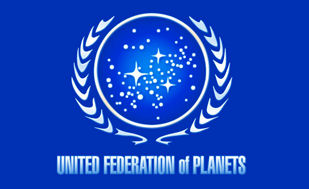
The United Federation of Planets (UFP) is an interstellar federal republic composed of planetary governments that agreed to exist semi-autonomously under a single central government based on the principles of universal liberty, rights, and equality, and to share their knowledge and resources in peaceful cooperation and space exploration. The Federation was founded by Earth, Vulcan, Andoria and Tellar in 2161. The Federation is located in the Alpha and Beta Quadrants of the Milky Way galaxy. At the start of 2389, the Federation's territory was spread across 8,452 light years with a membership of over 191 worlds, 37 protectorate worlds, and more than 1,500 semi-autonomous colonies. Its major neighboring sovereignties are the Klingon Imperial Empire, the Romulan Star Empire, the Cardassian Union, and the Breen Confederacy. Other neighboring sovereignties include the Ferengi Alliance, Gorn Hegemony, Tzenkethi Coalition, the Tholian Assembly, and the Xindi.
The Federation's government is a constitutional republic headquartered on one of the founding planets, Earth, in the Sol System. The current president of the United Federation of Planets is Jenin Kadur who recently won a third term in the 2388 presidential elections in a landslide victory. Fleet Admiral Shress Th'aryrhihr continues to serve as commander-in-chief of Starfleet after being appointed by Kadur and confirmed by the Federation Council in 2382. Under the joint leadership of President Kadur and Fleet Admiral Th'aryrhihr, the Federation has fully recovered from the economic and industrial effects of the Dominion War.
AFTERMATH OF THE DOMINION WAR
The peace treaty following the Dominion's surrender had unforeseen consequences. While formally ending hostilities between the Dominion and the Federation/Romulan/Klingon alliance, the relationship between the Federation and the Klingon Empire began to strain. Of the three allies, the Klingon Empire was in the worst shape following the war. The final year when the Breen entered on the side of the Dominion resulted in the Klingon fleet being the only ally immune to the Breen's energy dampening weapon. As a result, the Klingon Empire bore the brunt of combat activities and suffered heavy losses until the Breen weapon technology was eventually nullified. The Klingon Empire had hoped to claim new territory from the Cardassian Union following the war; however, because of the Cardassians' last-minute change of allegiance to the Allies, a separate peace treaty for the Cardassian Union was formed which resulted in no exchange of territory.
The Federation and Romulan Star Empire were the two remaining major powers immediately following the war. The once-promising alliance established during the Dominion conflict quickly faded in a new era of peace. Of the three allies, the Romulans had suffered the least. The political class of the Romulan Star Empire was looking at the benefits of a long-term alliance with the Federation; the Tal-Shiar and military class, however, thought otherwise. It was a matter of fate that the Shinzon coup, Reman uprising, and subsequent political instability postponed any plans for a future war with Starfleet.
The destruction of Romulus and Remus by the Hobus supernova forced the United Federation of Planets to become the peacekeepers of the Alpha and Beta Quadrants. While still aiding the Cardassian Union in their post-war recovery, the Federation immediately offered and supplied assistance to the Romulan Star Empire. The Federation Council passed a Condemnation Resolution in response to the Klingon Empire's opportunistic border expansion into the Romulan Empire, forcing more strain between the former allies.
The Federation Council approved a petition from the Vulcan Science Academy and Starfleet to conduct an investigation of the Hobus supernova. Despite the revelation that the Vulcans may have known about instability within the Hobus star, the Council determined the Vulcans may not have realized the full extent of the threat or the scope of the explosion, for it was greater and more violent than any supernova previously recorded.
POST-HOBUS AND KLINGON RELATIONS
The United Federation of Planets and its allies continued to assist with relief efforts toward the Romulan Star Empire and Cardassian Union until late 2390. Continued expansionist behavior from the Klingons has put Starfleet in an undesirable position of having to balance the need for border defense alongside the Federation's deteriorating diplomatic relationship with the Klingon Empire. More starships along the border will be seen as a hostile act by the hardliners on the Klingon High Council, and tensions are already high due to Starfleet's public aid packages toward the Klingon Empire's long-standing rival, the Romulan Star Empire.
Chancellor Martok continues to rule the High Council, though he is presumed to be nearing the end of his reign. His once-loyal support of the Federation during the Dominion War has wavered over the years as the geopolitical balance of power shifted following the destruction of the Romulan and Reman homeworlds.
"Whether you love or hate Martok, he is a known quantity," the Federation president recently said during an interview. "He's seen an opportunity to strengthen his empire and we should all be wary."
Federation political analysts look with concern at Chancellor Martok but ultimately, the Federation has decided to take a wait-and-see approach, keeping all diplomatic channels open to the Klingon Empire in the hopes of preventing future conflict between the two major powers.
Happier news for the Federation includes the formal admission of Bajor as a full member. The long process of acclimating the planet's economy and population into the Federation begins, although this process is eased somewhat due to the close ties Bajor has had with the Federation since the end of the Cardassian occupation in 2369.
7.2 Klingon Imperial Empire
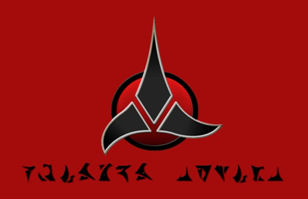
The Klingon Imperial Empire is an interstellar political entity and officially a feudal monarchy. Power once resided in the Emperor who was traditionally a descendant of the founder Kahless the Unforgettable, who first united the Klingon homeworld of Qo'noS in the 9th century. However, the position of Emperor was abandoned and the power now lies within the Klingon High Council which is led by the Chancellor. It is the official state of the Klingon people.
The true power of the Empire is held by the Chancellor and the High Council which consists of 24 members representing various Great Houses (the nobility). The Klingon Empire is a warrior culture and embraces these attributes. The role of expansion and defense are conducted by the Klingon Defense Force. While the agency controls the starships that bring new worlds into the empire, it is the Planetary Regiments that conquer the world itself and secure it in the name of the Empire. The upper levels of the Defense Force consist of the Klingon High Command.
Since its formation, the Klingon Empire has expanded its sphere of influence by conquering numerous systems and incorporating them in the Empire. Non-Klingon subjects of the Klingon Empire are called "jeghpu'wI", a status greater than slave but less than citizen. Primarily located in the Beta Quadrant with territory also in the Alpha Quadrant, the Klingon Empire borders several states: the United Federation of Planets, the Romulan Star Empire, the Orion Syndicate, and the Gorn Hegemony.
AFTERMATH OF THE DOMINION WAR
Following the end of the Dominion War, the Klingon Empire had suffered the most loses compared to the United Federation of Planets and Romulan Star Empire. The peace treaty with the Dominion was viewed as a way to secure resource-rich worlds in the Cardassian Union for the Empire. However, the Federation and Romulan governments' approval of a second, separate treaty with the Cardassians -- where no territory exchanges were granted -- left the Klingon Empire to feel their staunchest ally had dishonored their fallen warriors. Chancellor Martok's fierce support of the Federation began to take a toll on his political future. The war had caused a generational shift in the Empire as the ratio between young and old became 3:1, a population demographic not seen since the signing of the Khitomer Accords; the majority of the Klingon youth population grew up while the Empire was at war.
When the Romulan Star Empire fell into disarray following the failed Shinzon Coup, the Klingons took advantage of its weakened state and reclaimed a number of disputed worlds. Capitalizing on the confusion with lightning strikes into Romulan space, the Empire took control of the Tranome Sar and Nequencia systems in a matter of days, and was poised to strike even deeper into Romulan territory. The Klingons temporarily halted their advance when Starfleet sent a fleet to protect the Romulan/Klingon border, but tensions remained high and there were reports of minor skirmishes between Federation and Klingon starships. Diplomatic relations between the United Federation of Planets and Klingon Empire further deteriorated.
As his reign approached the end of its first decade, Martok's decisions were increasingly challenged by hardliners within the High Council. When Martok refused to give in to the hardliners' demands to invade Gorn territory, he was scorned as old and weak, and accused of being a Federation puppet for capitulating to Federation diplomatic demands to cease hostilities with the Romulan Star Empire.
POST-HOBUS AND GORN RELATIONS
While the United Federation of Planets continues to expand its sphere of influence into the Galactic South, the Klingon Empire sees the neighboring Gorn Hegemony as a ripe opportunity to project its own power and acquire new territory. Already since 2387, the Empire has grown approximately 18-percent in size with the addition of its conquered Romulan colonies. The Klingon Defense Force has restored its combat power to pre-Dominion War levels, and the launch of new battlecruiser designs has turned them into a potent and dangerous fighting force.
Many within the Great Houses view an impending war against the Gorn to be inevitable, and with Chancellor Martok exhibiting signs of old age and perceived mental decline, it is likely a new challenger will soon emerge with great ambitions to lead the Empire into the next century.
7.3 Romulan Star Empire
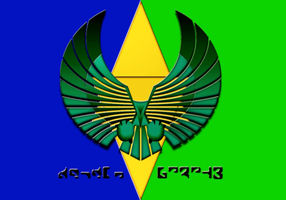
The Romulan Star Empire is a major galactic regional power encompassing the Romulan people and their subject worlds and species. Located in the Beta Quadrant, the Romulan Star Empire was founded through the unification and conquest of the planet Romulus and of dozens of star systems across many sectors of space. Formed after a group of Vulcans left the Vulcan homeworld and resettled on Romulus in the 3rd century, it is infamous for its ethnocentric, xenophobic, and expansionist foreign policy.
The head of state of the Romulan Star Empire was said to be the Emperor who was aided by a special Legate. In reality, however, executive power rested with the head of government who was the Praetor and who presided over the Imperial Romulan Senate. The Senate served as the legislature of the Romulan Empire with numerous senators representing their respective territories. Senators ascended to power through inherited station, wealth, or elevation by the Senate itself. Romulan aristocracy held a great deal of sway over the Senate, and many of the nobility's richest and most powerful noblemen are members of the government. Beneath the position of Praetor was the Proconsul, Vice-Proconsul, and the First Consul. Numerous coalitions dominated the Senate with consuls serving as leaders of their respective factions while the proconsul managed the Senate.
Though the Senate was an important chamber within the Romulan Star Empire, another powerful body was that of the Continuing Committee which regulated elevation to the various levels of governments. It was the members of the Committee who were responsible for confirming the ascent of an individual to the post of praetor, and also possessed authority to expel senators. The Committee was typically presided over by the praetor and composed of senators as well as high ranking Romulan officials - at times including the Chairman of the Tal Shiar.
THE DOMINION WAR AND SHINZON COUP
In the 22nd century, the Star Empire made attempts to destabilize local space, eventually leading to the Earth-Romulan War. The Romulans saw defeat in combat and retreated behind the newly established Romulan Neutral Zone for the next century. The Romulans re-emerged in the mid-23rd century, engaged in several aggressive encounters with the Federation, and entered into a short-lived alliance with the Klingon Empire before retreating back behind their borders early in the 24th century following the Tomed Incident. The Star Empire re-emerged once again in the mid-24th century following a series of unknown attacks along the Neutral Zone. It was later revealed the Borg were responsible.
Romulans initially signed a Non-Aggression Pact with the Dominion, however a plot devised by the Founders to invade the Star Empire was discovered. The subsequent death of a prominent senator was deemed an assassination by Tal Shiar investigators, resulting in a declaration of war against the Dominion. Reluctantly, the Star Empire joined the Federation-Klingon Alliance. The Romulans were in better condition at the end of the war compared to their two allies. Out of the three major powers in the alpha and beta quadrants, the Star Empire had lost the fewest starships and ground troops. The peace accord with the Dominion was signed and the Romulan people viewed the new post-war political landscape as an era of peace and Romulan dominance.
The Romulan Star Empire suffered a coup by the Human clone Shinzon which, while short lived, left the Empire in political disarray. Factions led by Donatra and Tal'aura were in conflict with each other while the Remans demanded increased freedoms and rights. Internal turmoil between these two opposing parties disseminated throughout the ranks of the Tal Shiar and the Romulan military. Efforts to reconstruct the Senate suffered multiple setbacks as several prominent candidates from both factions were assassinated by their political rivals.
The Reman Uprising of 2384 forced Donatra and Tal'aura into a brief political alliance, and finally ushered in a new Romulan Senate. Disgruntled by centuries of exploitation and second-class citizenship, tensions between the two races boiled over when the Remans commandeered several prominent Romulan shipyards and warbirds. Seeing the danger this 'rebel' faction of the Star Empire could pose to its stability, the Romulan response was swift and brutal. Spearheaded by the Tal Shiar, it took less than eight months to crush the Reman rebellion at the cost of many Reman lives.
HOBUS DISASTER AND RESPONSE
The Hobus star went supernova in 2387 less than four years following the reconstruction of the Romulan Senate. The explosion destroyed both Romulus and Remus, the capital worlds of the Romulan and Reman people. The loss of life and infrastructure was catastrophic, and once again, the Star Empire was in disarray with the Senate destroyed and the Praetor's whereabouts unknown. The Tal Shiar leadership council of Rator III declared itself the new Senate and Rator III the new capital, which was subsequently renamed as Romulus in honor of the Star Empire's original homeworld.
Many displaced Romulan and Reman refugees flooded the Alpha and Beta Quadrants immediately following the Hobus disaster. The United Federation of Planets was one of the first governments to send aid, but the Klingon Imperial Empire ruthlessly used the chaotic situation to blitz across the Neutral Zone and conquer several disputed worlds on the Romulan side of the border. Suffering from a lack of command and control infrastructure, the Romulan military was unable to mount a coordinated, successful defense of their territory. Within one year, the Imperial Empire had claimed over ten Romulan star systems for itself.
Starfleet intervention and diplomatic pressure eventually suspended the Klingons' territorial conquest campaign, but without sufficient resources, the Romulans were unable to retake their lost colonies. The Klingon/Romulan Neutral Zone has since been redrawn though not formally recognized by the Star Empire. Romulan fleet strength is currently approximated to be roughly 60-percent of its pre-Hobus levels; the Tal Shiar now fully controls the Romulan government and suspended the acceptance of Federation aid programs in late 2390.
7.4 Cardassian Union
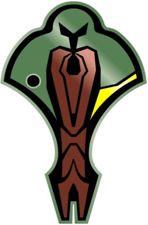
The Cardassian Union, also referred to as the Cardassian Empire, is an interstellar political entity located in the Alpha Quadrant. It is governed by the civilian Detapa Council and the military Central Command, based on the planet Cardassia Prime.
The balance of political power between the Detapa Council and Central Command has shifted numerous time through history. At times it is influenced by the Obsidian Order, Cardassia's secretive intelligence organization. In 2372, the Detapa Council took control of the government, sparking suspicions of a Dominion-influenced coup and leading to a Klingon invasion. In 2373, Gul Skrain Dukat - then-military advisor to the Detapa Council - secretly negotiated an alliance with the Dominion, making himself the nominal head of the Cardassian Union.
DOMINION WAR
Throughout their entire expansionist period, the Cardassian government was a military dictatorship called the Central Command. Although traditionally under the control of the Detapa Council (the civilian ruling body), both the Central Command and the Obsidian Order intelligence agency often operated with virtual autonomy. The two agencies frequently vied with each other over governmental control and policies. A special military liaison office was present which served to link the Central Command to that of the Obsidian Order. It was effectively considered a neutral position though it had little power over the direction of the Order.
The primary space force of the Cardassian Union is the Cardassian Guard, which is administrated by Central Command. The Obsidian Order once served as the primary intelligence organization for the Union, but no longer. A common award given by the Cardassian Union is the Legate's Crest of Valor, though the Proficient Service Medallion was also a prestigious award. The head of the military and of Central Command was a Cardassian who held the rank of Gul-Tar. A civilian uprising to overthrow the Central Command restored power to the Detapa Council, but it remained influential in politics and society. When the Cardassians concluded their alliance with the Dominion, Cardassia was a virtual dictatorship with Gul Dukat in command. Following the Dominion War, the Cardassian Union became a representative democracy headed by Elim Garak. The Detapa Council now acts as the legislature of the Union.
Along the borders of Cardassian space, a post-Dominion War agreement was reached between the Union and the Federation to disband Cardassia's military. The treaty provisioned Starfleet to maintain sector security, allowing the Union to concentrate its resources to rebuild Cardassia. Starfleet sent a fleet to Cardassia to assist the Cardassians in the dismantling of their military and officially establish Starfleet's role as Cardassia's protectors. The new agreement also prompted the Bajoran coalition to drop its campaign to charge Cardassians for war crimes in recent conflicts.
RECONSTRUCTION
The Cardassians took a major step toward self-sufficiency when they voted to replace the Reconstruction Committee with democratically-elected leaders. In the weeks leading up to the election, two groups dominated the debate: a civilian coalition with Elim Garak as a prominent member, and a hardliner group calling for the Cardassians to withdraw from the Federation-Cardassian Treaty of 2386, re-establish the military, and reimpose the Central Command. Garak's coalition won a narrow victory, and in its first act, reformed the Detapa Council as a representative body. The council faced its first controversy when it voted to send six ships as a token force to assist the Federation's recovery efforts in Romulan space. Popular opinion was against the decision and polls showed that most Cardassians felt that they should have reserved their resources. In addition, the Federation Council's decision to cut funding for Cardassian reconstruction by 30-percent made sending aid to the Romulans even less popular. Support for the Council plummeted.
Speaking to reporters from the shattered remains of the University of Culat, Elim Garak defended the Detapa Council's actions:
"We've seen what suspicion and backroom deals have brought us," Garak said. "We know what happens when we turn our backs on the rest of the galaxy and just worry about what happens on our own street, in our own city, on our own planet. Maybe it's time to try something different."
One of the first industries to be restarted in Cardassian space was mining. A former member of the military, Gul Madred, acquired the rights to several-mineral rich planetoids and began building a large mining operation in the Septimus system. By the end of 2388, the Cardassian economy had grown 20-percent.
7.5 Breen Confederacy
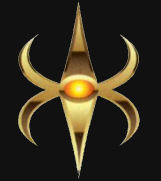
The Breen Confederacy is an interstellar power located in the Alpha Quadrant. As is the case with most things surrounding the Breen, the nature and operation of their government is a mystery. Noted diplomatic observers stated that they always dealt with an ever-changing cast of lower-ranking functionaries. These individuals were also quite reluctant in revealing their identities. The only determining factor in observations of Breen society was that their military officials made the high-level decisions and there did not appear to be any civilian government.
INTELLIGENCE AND THE DOMINION WAR
Relations between the Federation and the Breen were described as tenuous at best by the year 2360. The territory of the Breen Confederacy resided near that of the Sheliak Corporate. This was a source of conflict between the two empires. They also had some form of conflict with the Romulans, resulting in the Confederacy managing to either emulate or steal cloaking technology from the Romulan Star Empire at one point. Despite this hostility between the two, the Romulans never managed to decisively reach the Breen homeworld.
Intelligence reports on Breen society and biology were consistently inconsistent and contradictory. It was only recently that a team of undercover operatives revealed the Breen are in fact several different species working together. The suits employed by the Breen Confederacy were designed to provide every member of the Confederacy an equal chance to achieve success to ensure they were not biased against one another because of their species. Some of the more notable species include the human-like Silwaan; the Fenrisal, whose snouts required the distinctive shape of the Breen helmet; the bloodless Amoniri, who require refrigeration in their suits to prevent evaporation; and the Paclu, whose four-lobed brains defy telepathy.
Under the leadership of Thot Gor, the Breen Confederacy allowed itself to be annexed by the Dominion, joining the Dominion War during the conflict's closing months. Forces from the Breen Confederacy launched an attack upon Earth, the capital planet of the United Federation of Planets, destroying much of Starfleet Headquarters, San Francisco, and other cities on the surface while killing hundreds of thousands. While the addition of Breen starships initially led to several Dominion victories due to their unique energy-dampening weapon, the technology was soon countered and the Breen later surrendered along with the remains of the Dominion in orbit of Cardassia Prime. The subsequent peace treaty re-established the Breen Confederacy and the Cardassian Union as independent states. The Breen Confederacy remained an object of concern for many in the Federation following the war.
POST-WAR
The Breen Confederacy is currently in a state of isolationism. No Breen ships have been detected outside their territory since the end of the Dominion War.
7.6 Borg Collective
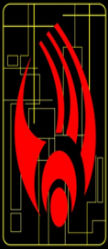
The Borg Collective is the term used to define the collective intelligence comprising all members linked together into a hive mind via subspace transceivers and calling themselves the Borg. It is the de facto governing power, as the term is considered by individuals, over all Borg civilization. Apart from some limited exploration, the Borg presence remained mostly in Delta Quadrant until the mid-24th century. Initial first contact between the Borg and Federation took place in 2153, after which the Collective began to target Humanity for assimilation. Following Captain Jonathan Archer's disasterous encounter with a single Borg vessel, the Collective quickly established itself as a major threat to the races of the Alpha and Beta Quadrants in the numerous incursions and assimilation attempts which followed.
INTELLIGENCE
The Collective makes decisions as a single entity. However, the Borg Queen plays an as-yet-not fully understood role in ordering the chaos of the Collective and the information flowing in from its trillions of drones. The voice of the Collective possesses a multi-track resonant quality, the sound of the trillions of drones speaking as one. This collective form of organization allows for tremendous efficiency in action and deliberation. With each drone functioning autonomously according to its instructions, it could at any time be processing information, performing physical actions, or focusing its energy toward other collective goals. The vast resources thus presented to the Collective allow for simultaneous execution of a nearly-infinite number of tasks as well as nearly limitless calculations. This, in turn, allows the Borg to consider multiple courses of action before committing to any one course. A prime example is the Borg's ability to "adapt" nearly instantaneously to any type of attack or threat. By focusing its resources on the threat at hand, all possible outcomes and responses can be explored within an extremely short period of time. This results in the Borg being able to bring a tremendous amount of force, or computational power, to bear against any single problem and overwhelm any opposition by sheer volume of numbers. The Borg's collective state of organization also greatly decreases the chance of error that exists from the decision-making of individuals or conflicts of opinion which are a major factor in hierarchical organizations.
One consequence of the collective state, noted by Captain Jean-Luc Picard, was that the Borg were utterly without mercy or compassion. In a collective society, only the needs of the group as a whole are considered, and in this utilitarian calculation the needs of the unrivaled number of Borg always override any other considerations.
The Collective's primary goal is to bring order to chaos: to achieve biological and technological perfection by assimilating unique and more advanced attributes from other races, and to help share the Borg's increasing perfection by adding said assimilated species to the Collective. The Borg's desire to obtain perfection leads them to go to great efforts when they encountered something they considered especially worthy of assimilation. Examples include the invasion of fluidic space in order to assimilate Species 8472, which they considered the pinnacle of biological perfection. Or chasing sensor ghosts on Lythos Prime when they believed they had found a hybrid carbon/silicon-based lifeform. The Collective's Holy Grail is the omega molecule, which they went to great lengths to obtain, believing it to be flawless.
FINAL CONFLICT
The Federation's last major encounter with the Borg occurred in 2378 when USS Voyager discovered their primary transwarp hub and destroyed it, killing the Borg Queen (again) and devastating the Unicomplex in the process. During this battle, the Borg were infected with a neurolytic pathogen carried by a time-traveling Admiral Janeway designed to disrupt the Hive mind; to turn order into chaos. It is still unknown if the event was a crippling blow to the Borg Collective.
7.7 The Dominion
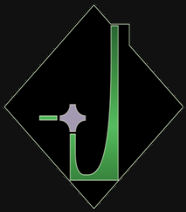
The Dominion is a major interstellar empire whose influence was exerted over thousands of planets in the Gamma Quadrant. It was founded and led by a group of Changelings called the Founders, who over some 2000 years conquered countless worlds across the Gamma Quadrant. They maintain order with their genetically-modified minions and armies; the Vorta and the Jem'Hadar.
Absolute rule of the Dominion remains in the hands of the Founders and their Great Link, whose decisions can not be disputed under any circumstances. However, the Founders are largely content to leave the administration of the Dominion's daily affairs to the Vorta. The loyalty of the Vorta and the Jem'Hadar is genetically-engineered, which in most cases ensured absolute obedience to the Founders. The Founders themselves are rarely seen, even by their servant races, and are treated as gods or myth. Due to such a social standing within the Dominion, most of what the Dominion's member races carried out were often for the glory of the Founders or to please them in some way, similar to how religious figures would pray or carry out an action to please their god(s).
ALPHA QUADRANT AMBITIONS
Dominion political strategy frequently avoids the use of its military might during initial contacts, instead preferring to conquer via influence and espionage. While Jem'Hadar fighters destroyed USS Odyssey as a show of force, the Dominion used its vast influential and espionage tactics to destabilize the Alpha Quadrant. For example, the Dominion precipitated a war between the Cardassian Union and the Klingon Empire only to subsequently strike an alliance with the Cardassian Union knowing full well they would accept due to their dire state. This form of subterfuge allowed the Dominion to gain political support and a foothold in the Alpha Quadrant before deploying its military power.
The Dominion made first contact with the Federation when they briefly captured Commander Benjamin Sisko, commanding officer of Deep Space 9, and others in the year 2370 on a planet in the Gamma Quadrant. Relations were immediately strained when Jem'Hadar warships destroyed USS Odyssey which had been sent to rescue Sisko and the party. Tensions grew between the Dominion and the major Alpha Quadrant powers, however by 2373, Gul Dukat of the Cardassian Union managed to negotiate a deal with the Dominion and the two governments formed an alliance. By the end of that year, the Federation officially went to war with the Cardassian-Dominion alliance.
THE DOMINION WAR
The war raged for two years with the Dominion gradually becoming more oppressive over their Cardassian hosts in the Alpha Quadrant while the Federation spearheaded an alliance including the Klingons and Romulans to fight the Dominion threat. In 2375 the war came to an end with the defeat of the Dominion by the Federation alliance, aided both by rebellious Cardassians and intervention from the changeling Odo's linking with the primary Founder commanding the Dominion forces.
A peace treaty was drawn up between the Dominion and the major powers of the Alpha Quadrant, then the Dominion retreated back into the Gamma Quadrant. Within their home territory, news of the major defeat spread, leading to rebellions on several subject worlds. They were quickly crushed by the Jem'Hadar. Direct contact with the Dominion has been non-existent following the war.
7.8 Klingon-Cardassian Alliance (MU)
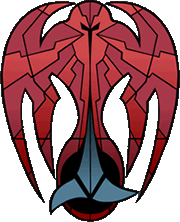
The Alliance is the historic union of two former enemies -- the Klingon Empire and the Cardassian Union -- in the face of aggression from the Terran Empire. The Alliance itself was led by a Regent who delegated authority to various Intendants who administrated the individual sectors of Alliance territory. As of 2372, the Alliance was ruled by Regent Worf. The Alliance conquered the Terran Empire following a series of reforms by Spock, the leader of the Empire, that had left it vulnerable to attack. When the Alliance was finished, the Terrans and the Vulcans were reduced to a slave race filling the mines of various Alliance planets.
PRESENT HISTORY
The Bajorans became a major partner in the Alliance in the later 24th century after their liberation from the control of the Terran Empire. However, Bajoran rule would end up leading to one of the greatest threats to Alliance control. On the station Terok Nor, a bizarre accident in the Bajoran wormhole brought a Federation runabout from the prime universe into the mirror universe. The runabout's crew, Kira Nerys and Julian Bashir, were only aboard the station for a few days, but their presence incited a rebellion among the Terrans, led by Benjamin Sisko.
The Alliance tried (futilely) to crack down on the Terran Rebellion, but the rebels managed to elude the Alliance at almost every turn. Although Sisko was killed by the Alliance in 2371, the rebels continued to fight on. By taking refuge in the Badlands, the rebels were able to avoid a confrontation with the Alliance fleet almost constantly.
In 2372, the Alliance suffered a humiliating defeat when the Rebellion managed to capture Terok Nor. Regent Worf personally led the assault fleet that attempted to recapture the station, but that fleet was defeated thanks to a powerful new warship the rebels had hurriedly constructed.
As if the Terran resistance forces' initial victories were not humiliating enough, the Alliance suffered a further defeat during an operation in which Worf attempted to obtain a cloaking device from the prime universe. Regent Worf himself was captured along with the Alliance's flagship by the rebels and taken to Terok Nor in chains. The final fate of the Alliance after Regent Worf's capture is unknown.
7.9 Terran Empire (MU)
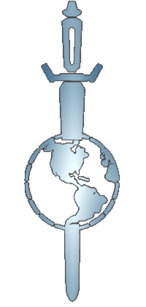
The Terran Empire is the repressive interstellar government dominated by the Terrans from Earth in the mirror universe. The Empire rules by terror, with its Imperial Starfleet acting as its iron fist. In Starfleet, officers promoted themselves by killing superiors who did not follow the rules of the Empire. Torture is a common form of interrogation. The Empire is the counterpart of the prime universe's United Earth and the United Federation of Planets governments.
It is not clear when the Empire began. Commander Jonathan Archer once stated that the Empire had existed for "centuries" as of 2155. Archer did not mention how many centuries, but by his statement, the Empire can be traced back to at least 1955, suggesting that it was a Terran (Earth) political party or movement before it became an interstellar empire. At some point, an astronaut planted the flag of the Terran Empire on Earth's moon, Luna.
FIRST CONTACT
Humanity's first contact with an alien species in the mirror universe began exactly as it did in the traditional universe. Upon detecting Zefram Cochrane's warp signature, a Vulcan scout ship landed in Bozeman, Montana to make first contact with Humanity. Instead of welcoming the Vulcans with the spirit of friendship and understanding, the mirror Zefram Cochrane killed the first Vulcan to set foot on Terran soil, with a gun. Humans subsequently boarded and ransacked the Vulcan ship after also killing the first officer. According to mirror Archer, the Vulcan first contact was considered a prelude to invasion.
Instead of the Vulcans gradually releasing technology to Earth over time, the Terran Empire applied the stolen Vulcan technology to a policy of aggressive expansion. Because of this, the Empire was able to engage in technological research and development considerably earlier than its United Earth counterpart in the prime universe.
HISTORY
Due to the rapid initial expansion made possible by the captured Vulcan technology, the Empire's hold on its territories was initially weak. In the 2150s, some of the worlds conquered by the Terrans were beginning to rebel against Terran rule, leading to a long-running conflict in which the Empire came to the brink of collapse. Propaganda, however, conveyed the message that things were going in the Empire's favor and that the war would be over soon. By 2155, the Terran Empire had already conquered the Vulcans, Denobulans, Andorians, Aenars, Orions, and Tellarites and had launched attacks against the Klingons, Rigelians, and Xindi.
In 2267, crewmembers of the USS Enterprise, including Captain James T. Kirk, were accidentally transported to the mirror universe aboard the mirror version of the Enterprise, the ISS Enterprise. Before Kirk left, believing that the mirror Spock would one day become captain of the ISS Enterprise, he planted a seed of doubt regarding the inevitability of the Empire, asking Spock if violence was the only logical answer. Spock promised to consider Kirk's words, after realizing the Empire would only last about 240 years before being overthrown.
As Kirk predicted, the mirror-Spock later became the captain of the ISS Enterprise and eventually rose to become Commander-in-Chief of the Empire. He began instituting major reforms that were very popular, turning the Empire into a more peaceful and less aggressive power. Unfortunately, Spock's reforms left the Empire unprepared to defend itself against the emerging threat of a united Klingon-Cardassian Alliance, which managed to conquer the entire Terran Empire, turning the Terrans themselves into a slave race. The Bajorans, a people conquered by the Empire, came to be a powerful voice in this Alliance.
Categories: Gameplay Manual

